Base Hit
What is the definition of a Base Hit in baseball?
A base hit in baseball is a term that refers to when a batter successfully strikes the ball and reaches base safely through their own skill, without the aid of an error or fielder’s choice. This fundamental element of the game is critical in understanding a player’s performance and has a major impact on a team’s offensive strategy. The concept of a base hit can be broken down into four categories, including singles, doubles, triples, and home runs. Each type of hit is counted equally when calculating a player’s batting average, providing insight into their offensive abilities.
Various factors can influence the likelihood of achieving a base hit, such as the speed of the runner, the ball’s trajectory, and the defensive capabilities of the opposing team. Additionally, base hit statistics are an essential part of determining a player’s slugging percentage and total bases. Notable records and milestones in baseball often revolve around base hits, showcasing exceptional batters who excel in this crucial aspect of the game.
Key Takeaways
- A base hit is when a batter reaches base safely by striking the ball without the help of errors or fielder’s choice
- Base hits are categorized as singles, doubles, triples, and home runs, all counted equally for a player’s batting average
- Factors such as runner speed, ball trajectory, and defensive capabilities affect base hit outcomes, and these statistics are vital in evaluating player performance.
Base Hit Definition
A base hit in baseball, often denoted as “H”, is an event where a batter successfully strikes the ball into fair territory and reaches base safely without the assistance of an error or a fielder’s choice. Base hits are essential in measuring a player’s batting average and offensive contribution to the game.
There are four main types of base hits in baseball. These include singles, doubles, triples, and home runs. Each type is distinguished by the number of bases the batter advances after hitting the ball.
- Singles: A batter hits the ball and safely reaches first base.
- Doubles: The batter reaches second base following a hit into fair territory.
- Triples: A hit that results in the batter advancing to third base.
- Home Runs: The ball is hit over the outfield boundary, or the batter runs through all the bases, resulting in a run scored.
A fair ball, which is necessary for a base hit, is determined by the settling of the ball on fair ground between the home plate and first or third base, making contact with fair ground beyond the imaginary line drawn between first and third bases, or being on or over fair ground when the ball bounces towards the outfield.
Understanding and being able to identify base hits is crucial for both players and fans alike, as it plays a significant role in the overall success and strategy of a baseball game.
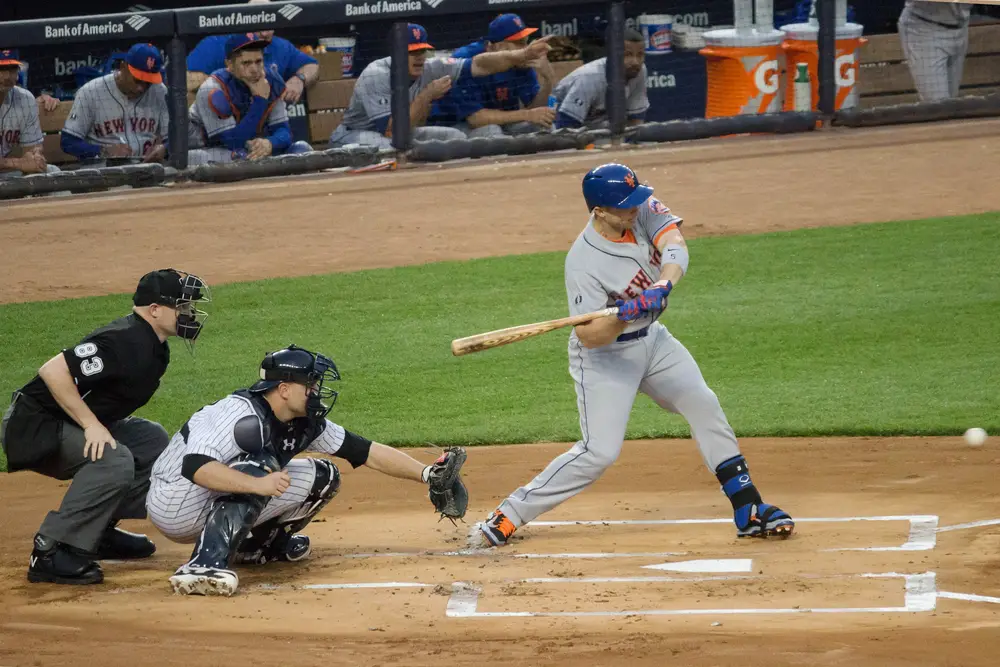
Types of Base Hits
Single
A single is the most common type of base hit in baseball. It occurs when a batter hits the ball and reaches first base safely without the assistance of an error or fielder’s choice. Singles can come in various forms, such as ground balls, line drives, and bloop hits. In general, singles are abbreviated as “1B” in baseball box scores.
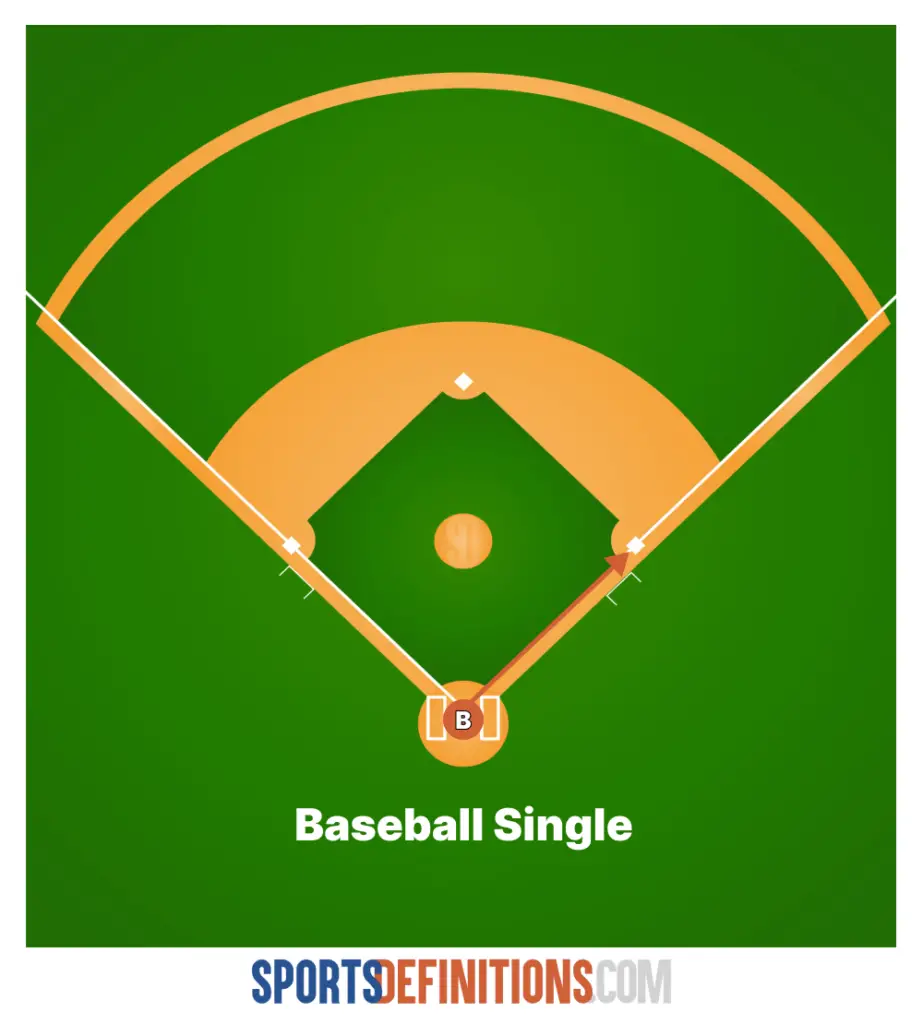
Double
A double is a two-base hit that allows the batter to reach second base safely. This type of hit often results from the ball being hit with enough power and placed well enough to avoid being caught by outfielders or reaching a boundary such as the outfield wall. Doubles are typically harder to achieve than singles and are abbreviated as “2B” in baseball box scores.
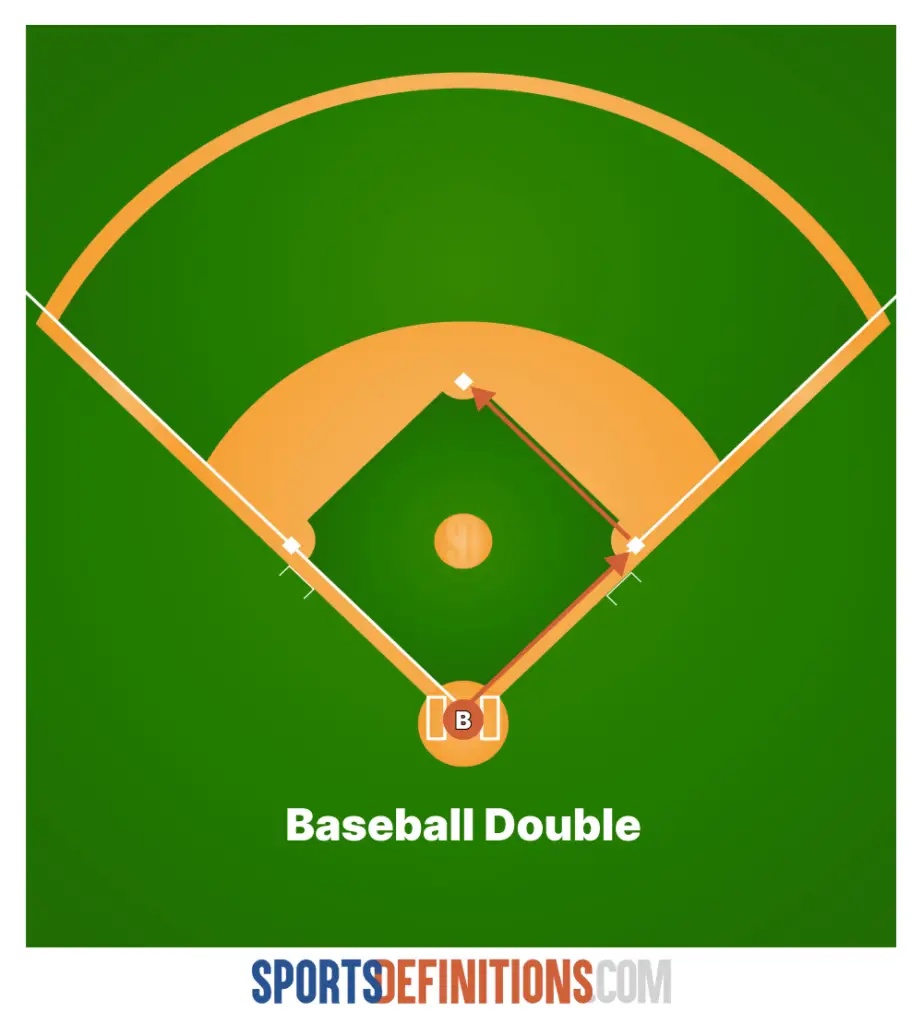
Triple
A triple, abbreviated as “3B” in baseball box scores, is a three-base hit that occurs when a batter reaches third base safely without the help of an error or fielder’s choice. Triples are rarer than singles and doubles, often requiring a combination of power, speed, and smart base running. Factors such as the size of the ballpark, the positioning of the outfielders, and the speed of the batter can all contribute to the likelihood of hitting a triple.
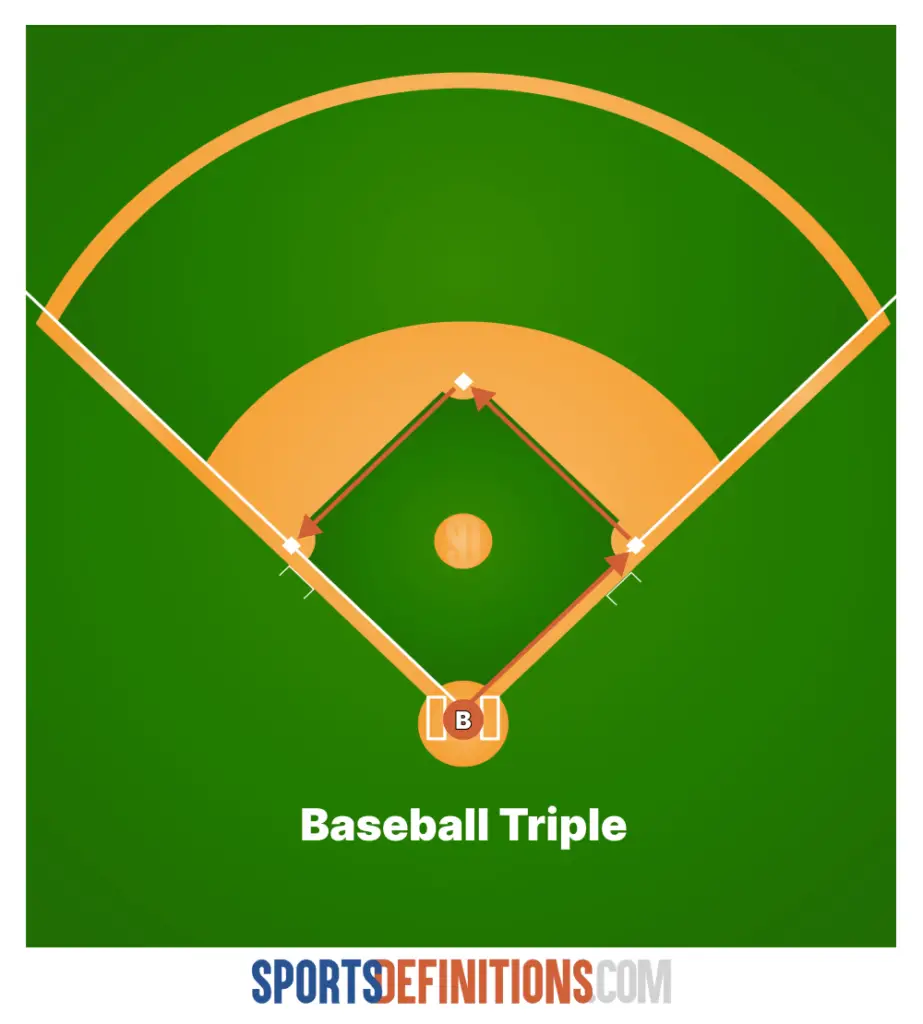
Home Run
A home run is a hit in which the batter is able to circle all four bases and score without any assistance from errors or fielder’s choices. Home runs are typically the most difficult type of hit to achieve and are celebrated for their power and impact on the game. There are two types of home runs: an inside-the-park home run, where the batter circles the bases without the ball leaving the field of play, and an out-of-the-park home run, where the ball is hit over the outfield fence. Home runs are abbreviated as “HR” in baseball box scores.
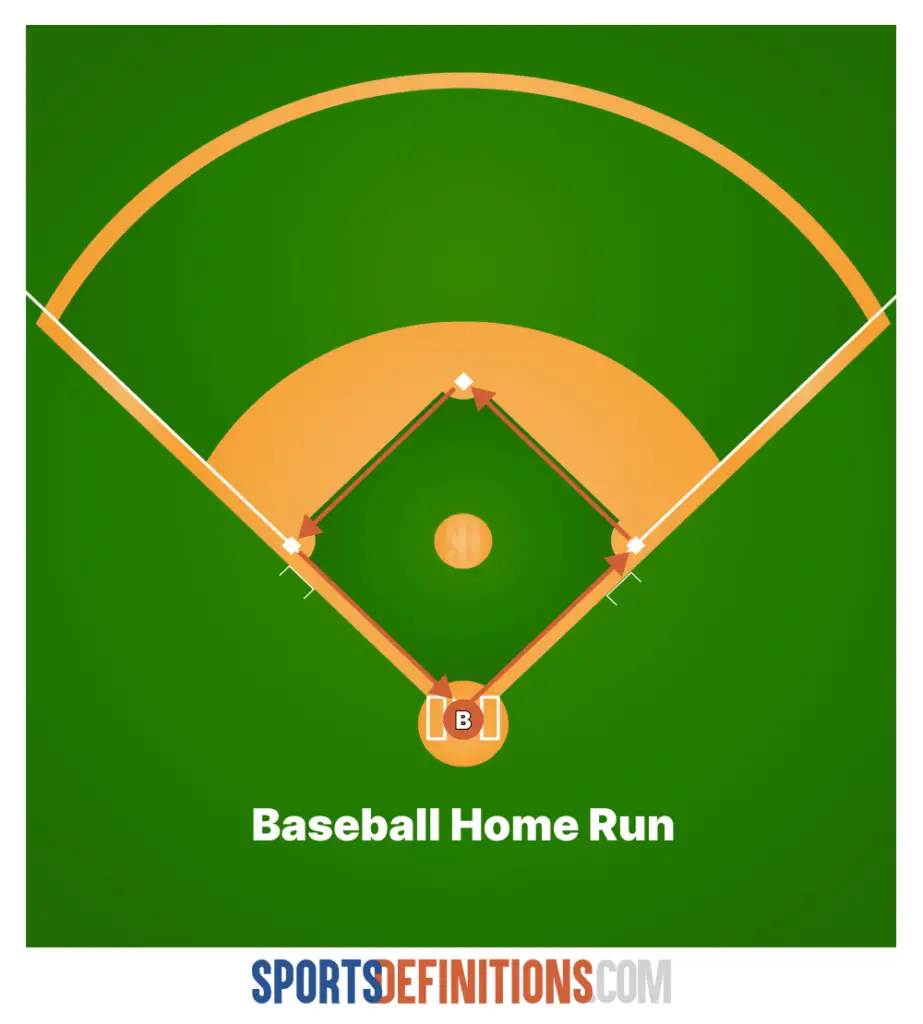
Base Hit Statistics
Batting Average
Batting average is one of the key statistics in baseball that measures a player’s hitting performance. It is calculated by dividing the number of base hits by the total number of at-bats, excluding walks and hit-by-pitches. For example, if a player has 15 base hits in 50 at-bats, their batting average would be .300. This statistic is often used to evaluate a batter’s consistency and ability to get on base.
Some notable batting average achievements include:
- Highest career batting average: Ty Cobb, with a .366 average
- Highest single-season batting average: Hugh Duffy, with a .440 average in 1894
Slugging Percentage
Another important statistic in baseball is the slugging percentage, which measures a batter’s power. It is calculated by dividing the total bases a player accumulates through hits (singles, doubles, triples, and home runs) by the total number of at-bats, excluding walks and hit-by-pitches. The higher the slugging percentage, the more extra-base hits a batter has generated.
Consider the following example: A player has 5 singles, 3 doubles, 2 triples, and 4 home runs in 50 at-bats. The total bases would be (5 x 1) + (3 x 2) + (2 x 3) + (4 x 4) = 33, resulting in a slugging percentage of .660.
Some notable slugging percentage achievements include:
- Highest career slugging percentage: Babe Ruth, with a .690 percentage
- Highest single-season slugging percentage: Barry Bonds, with a .863 percentage in 2001
By understanding these base hit statistics and their impact on a player’s performance, fans and analysts can better evaluate the skills and contributions of individual players to their teams. Both batting average and slugging percentage provide valuable insights into a player’s abilities at the plate and are essential components of baseball analysis.
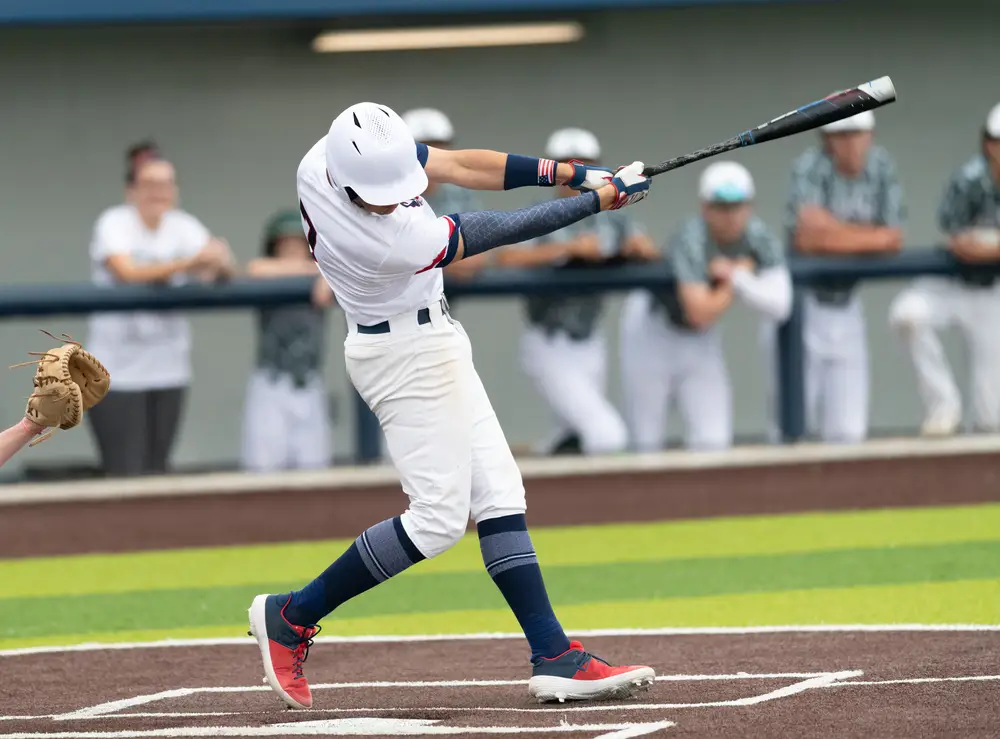
Factors Influencing Base Hits
Pitch Type
Pitch type plays a crucial role in determining whether a batter can hit the ball and reach base safely. A good pitch can be challenging to hit, while an inadequate pitch can increase the chances of a base hit. Some common pitch types in baseball include:
- Fastballs: These are the most prevalent pitches and can vary in speed and movement, making it harder for the batter to anticipate and make contact with the ball.
- Curveballs: These pitches have a significant downward and lateral movement, which can deceive the batter by appearing as a fastball at first.
- Changeups: These pitches are thrown at a slower speed than fastballs, causing the batter to swing early and potentially miss the ball altogether.
Batter Attributes
A batter’s skill level, experience, and strengths can impact the likelihood of getting a base hit. Several attributes can affect a batter’s success at the plate:
- Batting stance: A batter’s stance, grip, and swing mechanics can significantly impact their ability to make contact with the ball.
- Bat speed: Batters with faster bat speeds are more likely to hit the ball solidly and drive it into the field, increasing their chances of a base hit.
- Strike zone judgment: Batters who can accurately assess the strike zone and avoid swinging at bad pitches improve their chances of making contact and reaching base safely.
Field Conditions
The conditions of the field can also influence the likelihood of a base hit. Some factors that can affect base hits include:
- Field surface: A well-maintained field allows the ball to travel smoothly and predictably, making it easier for batters to anticipate the ball’s movement and make contact. On the other hand, a poorly maintained field with uneven surfaces can lead to unpredictable bounces and increased difficulty for batters.
- Weather conditions: Rain, wind, and humidity can affect the ball’s movement and the ability of fielders to make plays, potentially increasing the chances of a base hit.
- Field dimensions: The size of the outfield and the distances between bases can influence the ability of fielders to make successful defensive plays, affecting the likelihood of a batter reaching base safely.
Notable Records and Milestones
Career Hit Leaders
The all-time career hit leader in Major League Baseball (MLB) history is Pete Rose with 4,256 hits. This record was achieved throughout his 24-season career, a remarkable milestone that demonstrates his consistency and skill as a hitter.
Following Pete Rose in the career hit rankings, some other notable players include:
- Ty Cobb: 4,189 hits
- Hank Aaron: 3,771 hits
- Stan Musial: 3,630 hits
- Tris Speaker: 3,514 hits
Single-Season Hit Leaders
The record for the most hits in a single MLB season is held by Ichiro Suzuki with 262 hits. This record was set during the 2004 season, surpassing the previous record held by George Sisler with 257 hits in 1920.
Some additional top single-season hit performances include:
- Willie Keeler: 243 hits (1897)
- Lefty O’Doul: 254 hits (1929)
- Al Simmons: 253 hits (1925)
- Bill Terry: 254 hits (1930)
These records and milestones showcase the exceptional talent of several baseball players throughout history, reflecting their skill, determination, and passion for the game.
Conclusion
A base hit in baseball is a fundamental aspect of the game that plays a crucial role in determining a team’s offensive success. It is achieved when a batter reaches base safely as a result of the ball being put into play, without the help of an error or fielder’s choice. There are four types of hits: singles (1B), doubles (2B), triples (3B), and home runs (HR). Each type is distinguished by the number of bases the batter advances.
The batting techniques used to achieve base hits may vary. Players can opt for bunts, square-ups, or other strategies depending on their skill set and game situation. These techniques can significantly impact a batter’s statistics, team performance, and ultimately contribute to winning games.
In summary, understanding the concept of a base hit in baseball is essential for both players and fans alike. It is a critical component of the game, allowing teams to generate runs and build momentum while showcasing individual players’ abilities and techniques.
A base hit, otherwise referred to as just as hit, is a hit that a batter can make, which allows them to reach first base without indicating an error, fielder’s choice, or force play.
In order to score a base hit, a batter must hit a ball into fair territory and be able to reach at least first base without being tagged or put out in any way.
There are different kinds of base hits, including singles, doubles, triples and home runs.
What is the Definition of a Triple?
A triple in baseball is when batters and baserunners reach third base safely after hitting the ball. A triple is considered one of the most difficult hits to achieve in baseball, as it requires a combination of power and speed.
What is a Walk-Off Hit in Baseball?
A walk-off hit in baseball is a game-ending play that results in an offensive player scoring the winning run for the home team. It typically occurs when the winning run is scored in the bottom of the last inning.
What does a Go-Ahead Hit Mean?
A go-ahead hit in baseball is a hit that puts the batting team ahead of the fielding team in terms of score. It is a hit that gives your team the lead for the remainder of the game, or at least until the other team can reclaim it.
